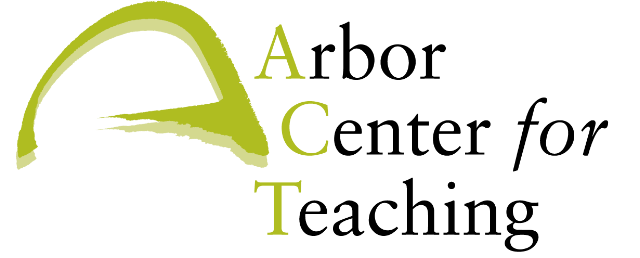At Arbor Center for Teaching, we believe it is the role of schools to build cultural trust within our communities such that all K-12 students will feel a sense of belonging, leading to healthful social/emotional growth and academic empowerment.[1] At the heart of this work lies the professional practice of educators, who are uniquely positioned to teach with a culturally responsive stance.[2] Also crucial to such belonging-focused communities is a membership that includes a diversity of thought and experience and works to eradicate any form of prejudice.[3]
Research shows that students from marginalized backgrounds face outsized impediments to a sense of belonging in schools.[4] Meanwhile, demographic studies establish that Oregon’s K-12 student body is increasingly diverse.[5] Fortunately, studies also show that increasing the number of teachers with backgrounds that match the diversity of K-12 students’ socioeconomic, linguistic, cultural/ethnic, and first-generation statuses has myriad benefits.[6] These include increasing student achievement and self-efficacy, and helping to eliminate barriers to belonging in school.[7] For all students, seeing people from diverse cultural backgrounds in positions of intellectual authority helps to undermine stereotype threat,[8] reduce implicit bias,[9] and improve cognitive problem-solving.[10] Broad representation within school communities can help prepare all students for life, work, and leadership in an increasingly multicultural and global economy. In fact, teams made up of individuals from different backgrounds outperform homogeneous teams on problem solving tasks.[11] Importantly, increasing teacher diversity can also improve overall teacher retention, mitigating teacher shortages as staff mentor and support one another within and across groups.[12]
While Arbor School and the Arbor Center for Teaching are but small entities in the larger educational scene, it has always been our aim to work at being part of what can be done to turn theory into practice, problem into solution, and need into possibility on behalf of students. The ACT has worked to build community partnerships and to collaborate in training and supporting Teacher Residents throughout their school placements and first years of employment. All Arbor Teacher Residents spend two years co-teaching full time in classrooms with experienced mentors and receive support for finding a job, followed by one-on-one mentorship from an ACT instructional coach after graduation. Our central focus on mentorship throughout the two-year MAT and into the first years of teaching makes our program particularly well suited to provide the emotional and professional support needed for new teachers to remain in the teaching field.[13]
In support of our mission, the ACT offers several Fellowship positions funded by the Arbor School community for Teacher Resident candidates from backgrounds currently underrepresented in the teacher corps[14] who demonstrate a commitment to promoting a sense of academic and social belonging for all students. It is also crucial that these teachers connect their own cultural backgrounds to students’ lived experiences while building bridges across perceived differences. Beyond the stipend and housing, course books, and mentorship offered to all Teacher Residents, those who are awarded an ACT Fellowship will receive financial aid equaling half the cost of tuition of the MAT program at Pacific University, as well as support and mentorship during and after completing the program.
[1]Hammond, Zaretta. (2015) Culturally Responsive Teaching and the Brain: Promoting Authentic Engagement and Rigor Among Culturally and Linguistically Diverse Students. Corwin. Vannebo BI, Ljunggren EB. (2021) Bridging or Bonding: An Organizational Framework for Studying Social Capital in Kindergartens. Int J Environ Res Public Health. Mar 6;18(5):2663. doi: 10.3390/ijerph18052663. PMID: 33800941; PMCID: PMC7967338.
[2] Gay, Geneva. (2000). Culturally Responsive Teaching: Theory, Research, and Practice. New York: Teachers College Press.
[3] Pettigrew TF. (1998) Intergroup contact theory. Annu Rev Psychol. 49:65-85. doi: 10.1146/annurev.psych.49.1.65. PMID: 15012467.
[4] Hammond. (20150 Culturally Responsive Teaching and the Brain.
[5] 2022 Oregon Educator Equity Report, Chief Education Office, 17-20. https://www.education.oregon.gov
[6] Scherer, E., & Cleveland, C. (2022). The effects of teacher-student demographic matching on social-emotional learning. Annenberg Institute at Brown University.
[7] Egalite, A.J., Kisida, B., & Winters, M.A. (2015). Representation in the classroom: The effect of own-race teachers on student achievement. Economics of Education Review, 45, 44-52.
[8] Steele, C. M. (1997). A threat in the air: How stereotypes shape intellectual identity and performance. American Psychologist, 52(6), 613–629
[9]“Brief of amici curiae: The American Psychological Association in Support of Respondents in Fisher v. University of Texas at Austin”; J. A. Richeson, S. Trawalter, and J. N. Shelton, “African Americans’ Implicit Racial Attitudes and the Depletion of Executive Function After Interracial Interactions,” Social Cognition 23, no. 4 (2005): 336–52, http://groups.psych.northwestern.edu/spcl/documents/blk_stroop.pdf.
[10]K. Phillips, “How Diversity Makes Us Smarter,” Scientific American 311, no. 4 (October 2014), http://www.scientificamerican.com/article/how-diversity-makes-us-smarter/
[11] S. E. Page, (2008) The Difference: How the Power of Diversity Creates Better Groups, Firms, Schools, and Societies. Princeton, NJ: Princeton University Press.
[12] Ingersoll, R. M. (2001). Teacher turnover and teacher shortages: An organizational analysis. American Educational Research Journal, 38(3), 499–534; Ronfeldt, M., Loeb, S., & Wyckoff, J. (2013). How teacher turnover harms student achievement. American Educational Research Journal, 50(1), 4–36; Sutcher, L., Darling-Hammond, L., & Carver-Thomas, D. (2016). A coming crisis in teaching? Teacher supply, demand, and shortages in the U.S. Palo Alto, CA: Learning Policy Institute.
[13] Rob Longwell-Grice, Nicole Zervas Adsitt, Kathleen Mullins, William Serrata. (2016) The First Ones: Three Studies on First-Generation College Students (2016) NACADA Journal Volume 36(2).
[14] Pit-ten Cate Ineke M., Rivas Salvador, Busana Gilbert (2021). Increasing the Diversity of the Teacher Workforce: Socio-Political Challenges to Reducing Inequalities in Access to Teacher Education Programs. Frontiers in Education, vol. 6. Fiddiman, B., Campbell, C., & Partelow, L. (2019) Student Debt: An Overlooked Barrier to Creating Teacher Diversity. Center for American Progress.

